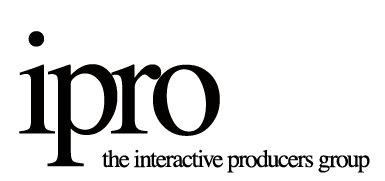
Q: Introduce us to yourself and your company.
Hello and welcome to another installment of an idiot writing about himself. I’m Evan Fry, and I’ll be your idiot for the day. Our company is fresh-baby new, it’s called Victors & Spoils and we’re striving to be the first agency model that is one part ad agency, one part crowdsourcing. We just opened our doors here in Boulder Colorado. I’m not an Interactive Producer and I don’t even play one on TV. I can pretend to be one here or instead we can agree to replace “Interactive Producer” in all these questions with “Creative Officer.” I’m going to go for the latter. Might be a huge mistake.
Q: Interactive Producers come from all walks of life, they are a hybrid of talents, tell us about your background and how you got interested in digital production?
I hate digital production. I know dick-all about it. Can you see how funny I am? God I bet everyone is just laughing their asses off right now. But seriously folks. I love digital production. Though I can’t really do it as an interactive producer might, given that I’m not in the least bit qualified, I have the utmost respect for those who can. Without them, we’d all be watching TV ads in full-forward via Tivo wishing there was something better in the world of marketing.
Q: How do you stay on top of emerging technologies and keep your team informed and motivated?
I think it’s mostly through forced immersion. Learn by doing action. At Crispin Porter + Bogusky where I spent my last seven years before Victors & Spoils, I basically realized I had to start learning a lot lot more. And in a hurry. So I took it upon myself to pay more attention and not glaze over entirely while all these other talented bastards on projects I was overseeing spouted on and on. That helps a lot. Also what helps is making friends with developers. I’ve got a few actually. And man are they smart. One of them is lead developer on a side project of my own that we launched a couple of months ago called BFA (befuckingawesome.com) – and through turning BFA into reality I’ve learned a lot for sure. Thanks to Chris. That’s his name. He drives a badass ‘Vette too. He has it all. Fucker.
Q: What does your ideal client/project look like?
It starts with a willing and smart client sitting across from us saying something like ‘hey we really want to solve something that we know we have to solve. How do we do that?’ Ideally it’s something where a company realizes that they are deficient in some big overarching realm like social media or mobile. Or maybe it’s something where they want to engage their fans and customers to create something. You never know what could come out of something big and high-elevation like that. Those are the best. When you work together to solve a business problem, everyone open-minded about what the solution may look like or what medium it will use.
Q: How do you educate your clients and set realistic expectations for a project?
Talking. Honesty. Perception. Being observant and listening and making sure everything is a conversation, never a stance of selling this or that.
Q: What was the best project you have ever worked on?
This is a great question. I’ve been lucky enough through the staggeringly savvy machine of CP+B to be involved with some really fun launches and high-profile stuff. It’s hard to pick one. The GAP :90 with Spike Jonze is pretty tough to beat though. By today’s standards a complete traditonal-media yawn with no extensions and a total media dead-end. But watching Spike killin’ it was just really awesome.
Q: How many projects are you comfortable producing at one given time?
Is 0 a good answer? It has to be 0.
Q: What tools do you use to help you better organize your projects?
I’m a huge fan of Stickies. Macintosh HD > Applications > Stickies.
Q: What does your dream production team look like?
Everyone is well fed and extremely attractive. There are also at least two dogs there. A ball to toss said dogs. And some Colorado IPA in a cooler. Everyone is smart, positive, problem solving, make-it-happen types. Nobody smokes or bitches about shit.
Q: How do you ensure that your client's best interests are met?
Listening. Respecting them. But also realizing that the happiest clients are always going to be the ones who are behind successful business solutions and results that catch fire. So sometimes making sure their best interests are met means being really honest and making sure they know I’m coming from a place where I just want to make their brand famous.
Q: What is your vision of what the next phase of our industry is going to look like?
Web-platform systems where creatives cherry pick projects from wherever they are, producers execute brilliantly and we continue to move everything forward. Strategic and creative direction are still personal but everyone else is outlaw hired gun. Lots of mustaches and whiskey. Even the women wear mustaches and swill whiskey.
Q: Please share a snippet of wisdom that you would like to impart on our readers.
Sometimes going for a bike ride is the best answer.

















